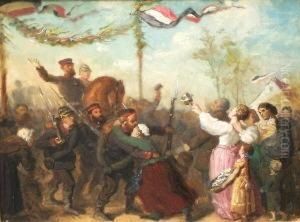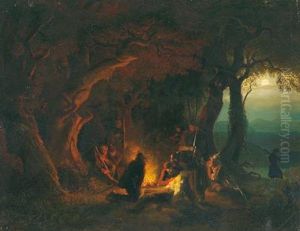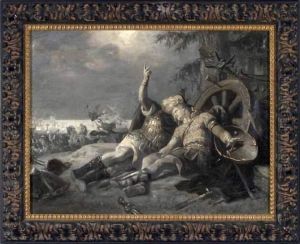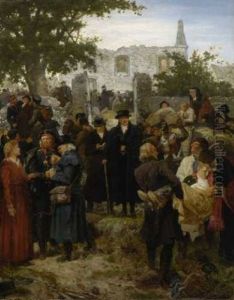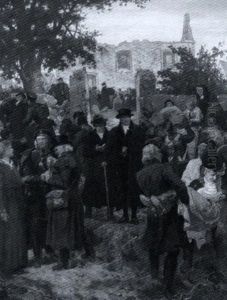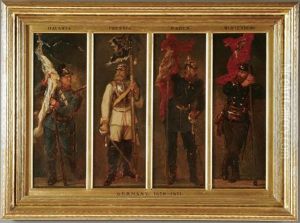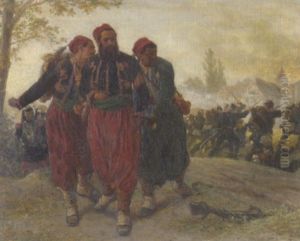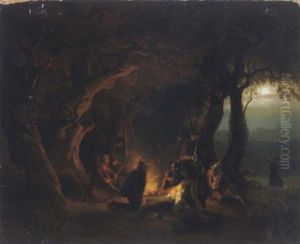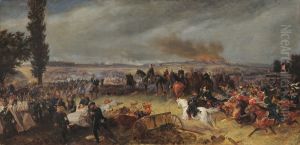Georg Bleibtreu Paintings
Georg Bleibtreu was a German painter, primarily known for his works depicting battles and military themes. Born on March 27, 1828, in Xanten, Rhine Province, Bleibtreu developed a passion for art at an early age. Despite his father's initial opposition, who was a doctor, Bleibtreu pursued his artistic interests and eventually received his father's support to study art formally.
He began his artistic education at the Düsseldorf Academy, one of the leading art schools in Germany at the time. There, he studied under the tutelage of Wilhelm von Schadow, who was renowned for promoting the Düsseldorf school of painting. Bleibtreu's early work was influenced by the academic style of painting, which emphasized historical and religious themes with a meticulous approach to detail and composition.
As his career progressed, Bleibtreu became increasingly interested in military subjects. This was partly inspired by the political climate of the time, with the unification of Germany under Prussian leadership and the numerous conflicts that marked the 19th century. His breakthrough came with the painting 'The Battle of Königgrätz,' which depicted the decisive battle of the Austro-Prussian War in 1866. This work earned him significant acclaim and established his reputation as a battle painter.
Bleibtreu continued to focus on military scenes, often portraying the valor and chaos of war with a romanticized touch. He was known for his ability to capture the dynamic movement of troops and the intensity of battle, attributes that made his works popular among military enthusiasts and collectors. Some of his notable works include 'The Battle of Gravelotte' and 'The Battle of Wörth,' both of which reflect his interest in the Franco-Prussian War.
He also worked on a series of paintings for the Berliner Panoptikum, a waxwork exhibition, where he depicted scenes from the Wars of Liberation against Napoleon. In addition to his battle scenes, Bleibtreu also created historical and genre paintings, although these were less central to his oeuvre.
Bleibtreu's career was not without challenges. As tastes in art shifted towards Impressionism and other modern movements at the end of the 19th century, his traditional style fell out of favor. Despite this, he remained committed to his genre and continued to produce work until his death.
Georg Bleibtreu died on January 15, 1892, in Charlottenburg, which is now part of Berlin. While not as widely known today as some of his contemporaries, his work remains a significant contribution to the genre of military art and provides a vivid pictorial record of 19th-century European conflicts.
